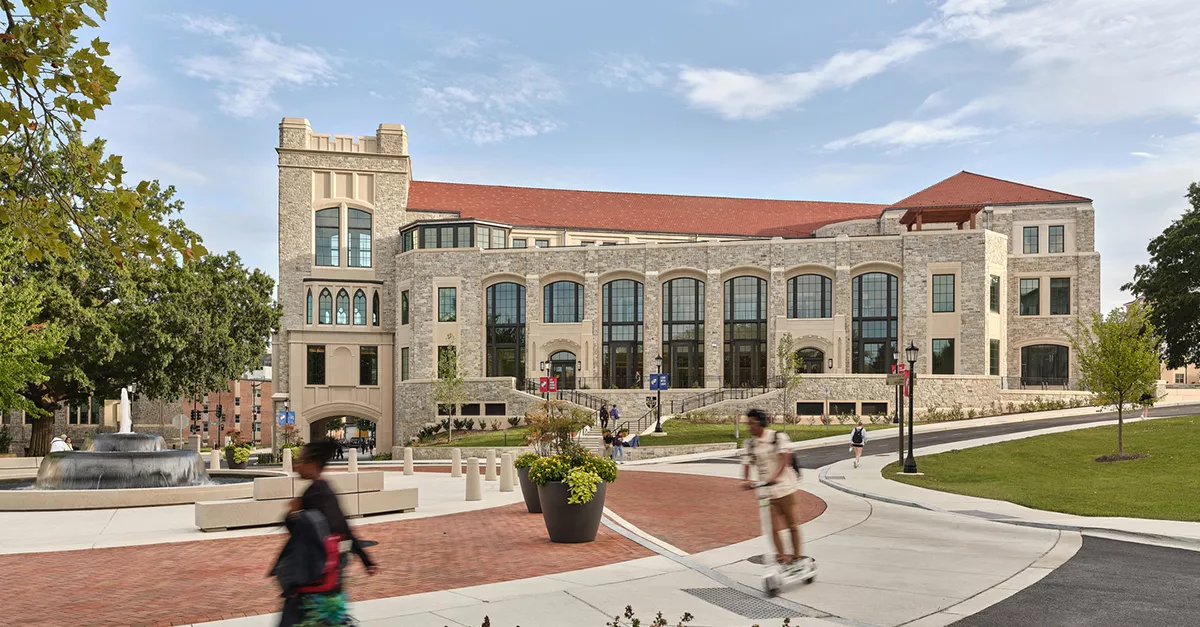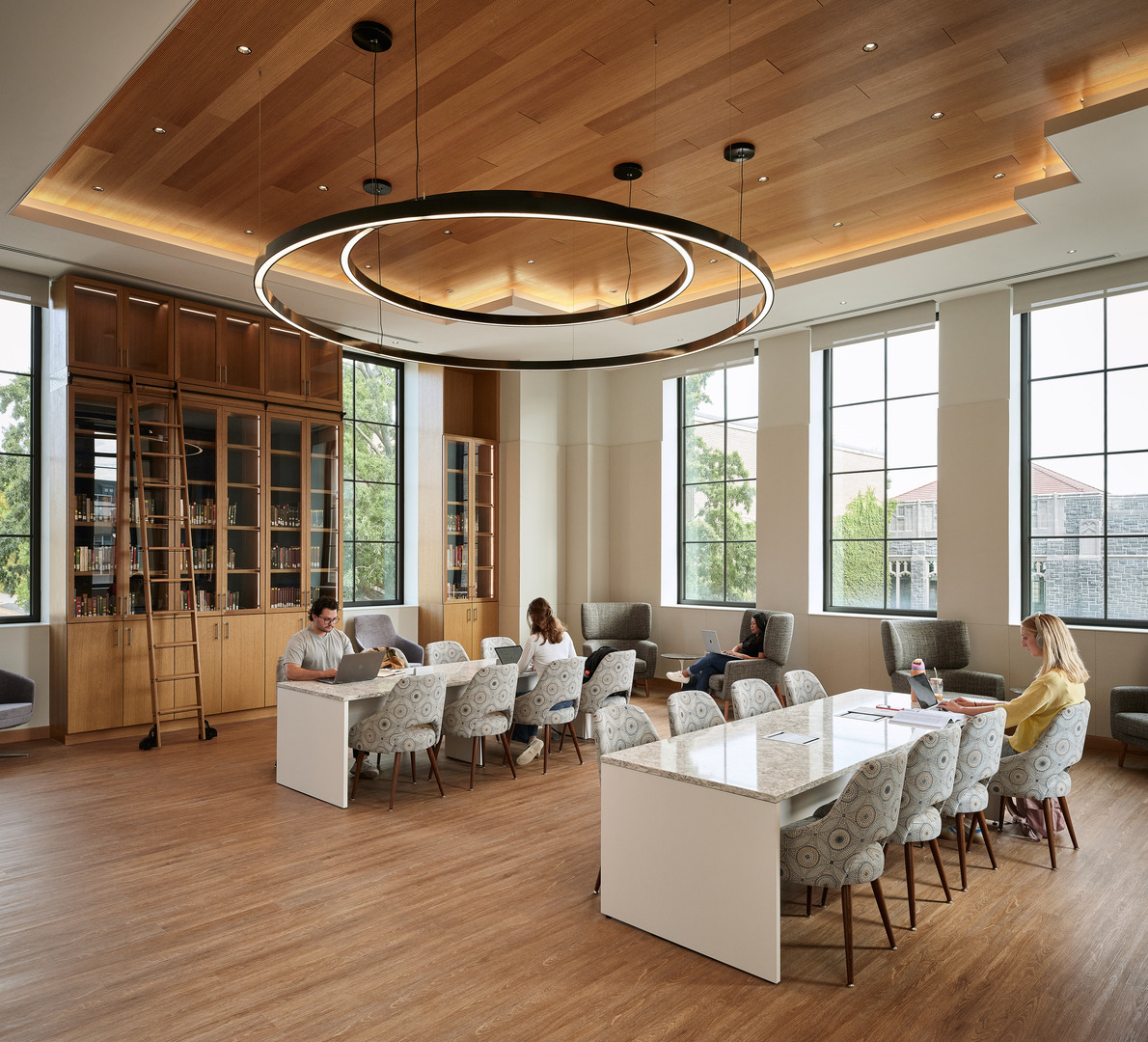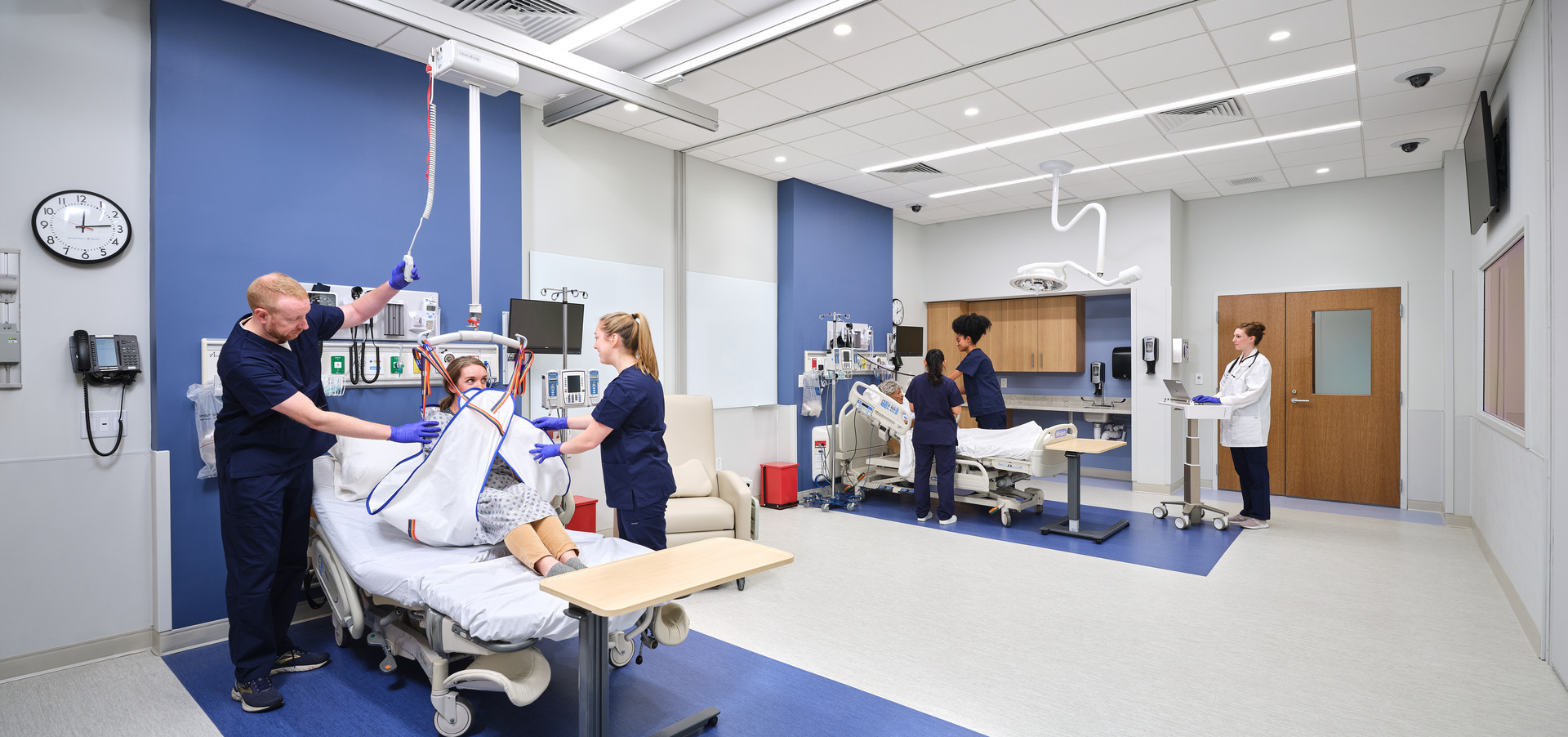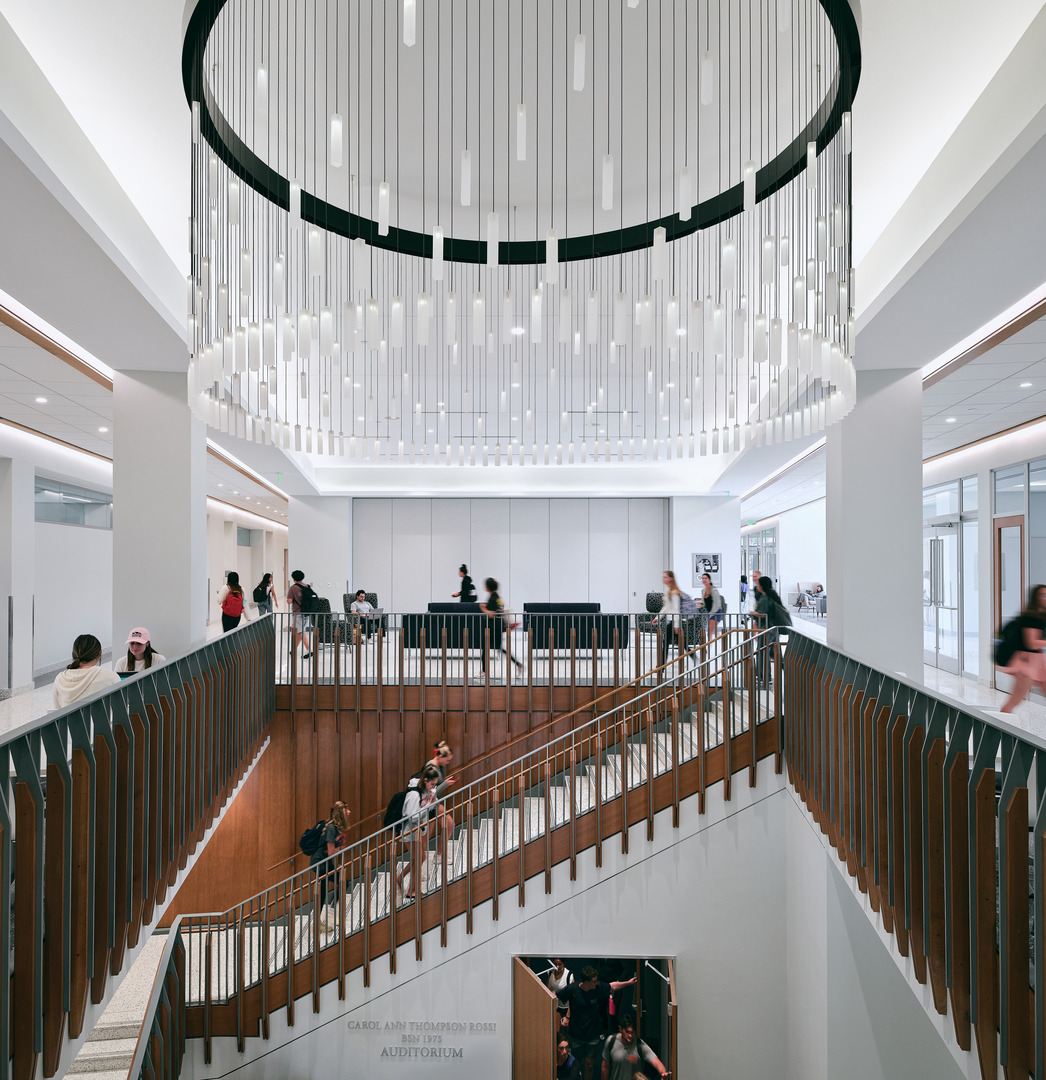History Meets Healing at The Catholic University of America’s Conway School of Nursing
January 13, 2025

The Catholic University of America's Conway School of Nursing building blends old and new for a facility designed to train the next generation of nurses.
At The Catholic University of America, the new Conway School of Nursing building and Campus Gateway are testaments to the school’s aim of “serving the needs of human society.” The building’s historic exterior conceals a state-of-the-art nursing education facility that will double the university's nursing enrollment in the next five years and support an industry focused on the art and science of human care.
Clark Construction, in collaboration with architectural firms Ayers Saint Gross and Robert A. M. Stern Architects, meticulously blended the old and the new, ensuring the facility complements the historic gothic-style campus while serving as a striking entrance to the campus.
Image
.jpg)
From the beginning, the project team knew that finding the right exterior materials would be one of the most challenging components of the project. To blend seamlessly with a campus founded in 1887, meticulous planning and creative material sourcing were needed to successfully craft a new building that looks more than 100 years old. The final structure features custom-designed, gothic-style, aluminum-framed windows, a clay tile roof, and stone salvaged from Philadelphia’s Transfiguration of Our Lord Church, built in 1924 and demolished in 2009.
“Nurses transform lives, and it is significant that these stones were used in a church where people were married, baptized, and had funerals,” said Dr. Marie Nolan, dean of the Conway School of Nursing. “That is the whole life of nurses – they are there at the beginning and end of life, and everything in between.”
The façade consists of hundreds of precast panels of various sizes, and several of the stones weigh more than 40,000 pounds. The project team also spent nearly a year developing the right look for the gutter and downspout collector boxes.
While the facility’s exteriors were crafted with an artisan’s approach, capturing countless details to ensure alignment with the historic campus, the interiors were built to shape the education of generations of nursing students.
Image

The 102,000-square-foot nursing school has four floors and serves multiple functions for students, faculty, and university guests. Upper-floor laboratories hold microbiology, anatomy, and physiology classes and feature compressed air, vacuum, gases, and different types of fume extraction. They also feature immersive virtual reality classrooms with centralized prep rooms.
The facility also houses simulation suites that mimic hospital rooms and an emergency department. These spaces, featuring patient beds and headwall units with compressed air and suction, provide a realistic training environment. Catholic University faculty electrically direct mannequin ‘patients’ from a centralized control room, allowing students to partake in immersive medical scenarios. On the third floor, another simulation suite serves as an ‘emergency room.’
Image

The new Campus Gateway, a redesigned university entrance crowned by the Trinity Fountain, anchors the nursing school and strengthens connections across campus. Several pathways were rerouted around the fountain to create intentional alignments with the north stairs of the Conway School and serve as a waypoint en route to the Basilica of the National Shrine of the Immaculate Conception.
Throughout construction, the project team focused on delivering a beautiful, functional facility built to last for generations. More importantly, they recognized the deeper significance of the project – the nurses who would be shaped and inspired within its walls.
“Our nursing program is already regarded as prestigious and one of the best in the nation, and the impact of our instruction and of our nursing graduates is far-reaching – well beyond this neighborhood and area hospitals where our students do their clinical training…Now, with this spectacular building, we have a setting that can truly match the outstanding caliber of our faculty and students and spur them on to even higher heights.”
Dr. Peter K. Kilpatrick, President, The Catholic University of America
Image

This article originally appeared in the Fall 2024 issue of Superstructure, a Clark publication about our projects and teams. Click through to find all issues of Superstructure.


